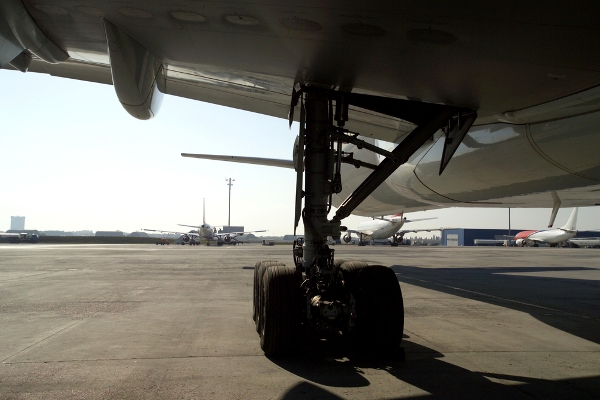As we’ve reported, airlines are looking for cleaner, cost-effective ways to power their fuel-guzzling jet engines, trying out biofuels that utilize everything from algae to the leftovers at the farmers market. But there’s a new idea for greening air traveling—or at least the inevitable ground portion of it—that takes an entirely different approach: Engineers at the U.K.’s University of Lincoln believe they can use the power from a jet’s landing gear to generate enough energy for planes to taxi to and from the airport gates.
As you might imagine, the braking system on a heavy and speedy airplane exerts an immense amount of energy when landing. Rather than allow the friction energy in the plane’s disc brakes to be wasted as heat, University of Lincoln engineers want to capture and convert it to electricity using motor-generators built into the landing gear. The electricity could be stored and then released to in-hub motors on the plane wheels to power taxiing.

Born out of a larger feasibility study on capturing energy from a landing aircraft, this approach to the landing gear was one of the more cost-effective and technically feasible ideas in the bunch. Now, no one is saying that these spinning wheels would power a transatlantic flight, or even a short commuter trip. But, it could get you from the runway to the gate.
This seemingly small proposal is actually a big deal when considering the low fuel efficiency and noise pollution caused by using huge jet engines to tool around the runways. In fact, engine-less taxiing was made one of the key objectives post-2020 for the European aviation industry by the Advisory Council for Aeronautics Research in Europe.
“If the next generation of aircraft that emerges over the next 15 to 20 years could incorporate this kind of technology, it would deliver enormous benefits, especially for people living near airports,” Research lead Professor Paul Stewart said in a statement. “Currently, commercial aircraft spend a lot of time on the ground with their noisy jet engines running. In the future this technology could significantly reduce the need to do that.”
That’s not to say there aren’t a few issues to address before making this a reality. The study identified some technical challenges around weight and minimizing the amount of conductors and electronic power converters required for the proposed onboard energy recovery system. However, by integrating this technology with other research currently underway on creating a more electric or all-electric aircraft, researchers at the University of Lincoln believe the next generation of aircraft could realistically feature “engineless taxiing.”